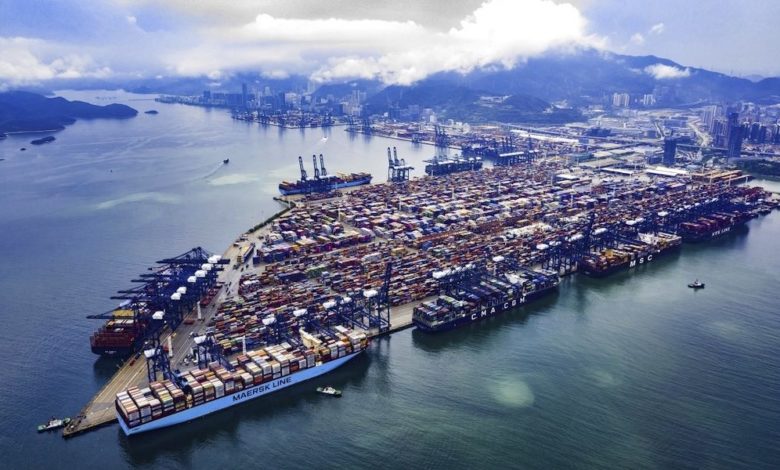Yantian box disruption surpasses March’s Suez crisis

The number of containers unable to move from south China because of a Covid-19 outbreak around Yantian Port has already surpassed the volume of boxes held up in March when the 20,388 teu Ever Given blocked the Suez Canal in Egypt, statistics that serve to underline the severity of the latest supply chain crisis hitting liner shipping.
Lars Jensen, CEO of Danish consultancy Vespucci Maritime, has crunched the numbers to compare the impacts of the two incidents.
Yantian handled 13.3m teu in 2020, equal to 36,400 teu per day. Presuming that Yantian – responsible for more than one-third of Guangdong’s foreign trade and one-fourth of China’s trade with the US – has been working at 30% operating efficiency since the Covid-19 outbreak was detected 14 days ago, that would mean 25,500 teu per day have not been handled, totalling some 357,000 teu to date.
Putting this in context, when Suez was blocked by the Ever Given this impacted a daily flow of 55,000 teu. However, March’s Suez crisis lasted for just six days.
Shippers should not underestimate the magnitude of the coming ripple effects
“Shippers should not underestimate the magnitude of the coming ripple effects,” Jensen warned in a post on LinkedIn.
While lines have rerouted some ships to alternate south China ports such as Nansha, Shekou and Hong Kong, these facilities are not able to handle all the extra box flow. There are around 40 ships waiting at anchor for a slot to open up in Yantian (see Tweet below).
“Every day increases the pile of backlogged cargo. Once the ports re-open to normal operations we should expect a surge of cargo – at least to the degree there are even vessels available to handle this. This in turn will cause ripples of potential congestion at the destination with a lag time of some two to five weeks,” Jensen suggested, adding that there is also the issue of the disruption of empty flows back into South China to contemplate as an additional ripple effect.
Yesterday Maersk issued an updated customer advisory listing 40 vessel arrivals now being affected with omission in Yantian and cargo being shifted to other sailings or having to wait, a significant escalation from just three days prior where the term used was that “several vessels will be omitting the Port of Yantian and Shekou”. Maersk said it expects continued terminal congestion and vessel delays upwards of 14 days in the coming week.
Writing for Splash yesterday, Alan Murphy, CEO and founder of Danish container shipping consultancy Sea-Intelligence, noted that liner shipping’s run of accidents over the past few months had been near impossible to absorb given the uniquely stretched status of carrier equipment around the world.
“High freight rates are driven by equipment and space shortages, which in turn are driven by a confluence of unprecedented US demand (due to pandemic shifts from services to goods) and supply-side disruptions,” Murphy wrote, going on to list port congestion, Covid infections and quarantines in ports such as Yantian, vessels being grounded due to quarantines, and the challenges of vessels getting stuck in canals, dropping boxes, or catching on fire.
“In the past 10 years, vessel incidents would be terrible for those immediately impacted, but they would not have any systemic impact, as the unaffected boxes and boxes waiting to be loaded would just go on the next half-empty ship, but all of the ships are full now,” Murphy pointed out.
